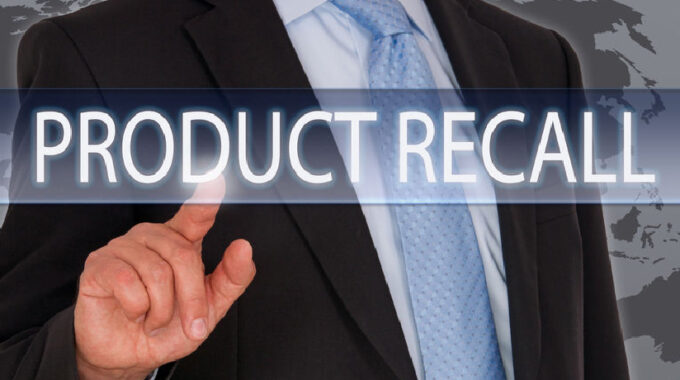Software in Medical Devices – Update for Q3/Q4 2023 The past year, as in previous…

Software in Medical Devices – Update for Q3/Q4 2016
Software in Medical Devices – Update for Q3/Q4 2016
This is a continuation of the software updates I have been sending out. Please check out all of the references to download and/or to purchase. If you have any questions, please contact us.
Software Recalls Q3-Q4 /2016
We have been following the recalls and there were a growing number of recalls that are listed where software played a role in the recall. The following are additional examples of recalls involving software directly as listed on the FDA website. There were almost 60 recalls in this quarter relating to software, including 3 class I recalls. There may be more but classified not under software directly.
- Brainlab Cranial Image-Guided Surgery Sys, Class I – Brainlab is recalling the Cranial IGS System due to potential inaccuracies in the display by the navigation system compared to the patient anatomy. This could lead to inaccurate, ineffective medical procedures, and serious life-threatening injuries including death.
- Dräger, Medical Emergency Ventilators, Class I – Dräger is recalling the Oxylog Emergency Transport Ventilators because an electrical issue may cause the device to stop working if the control knobs (adjustment potentiometers) are not regularly used. If the device operator does not intervene, the patient may not receive enough oxygen and could suffer serious adverse health consequences, including injury or death.
- Dräger, Critical Care Ventilator, Class I – The battery capacity of the optional PS500 power supply unit for the Infinity (ACS) Workstation Critical and Neonatal Care was rapidly and unexpectedly reduced, despite using the most recent power supply firmware version 1.50 released in November 2015 (recall Z-0436-2016). The batteries were prematurely discharged, even though an adequate battery charge status was displayed on the device.
- Accu-Chek, Inform II Base Unit, Class II – Accu-Chek Inform II Base Unit might produce physical transmission errors in the form of data loss in the communication between the meter and the Data Management Systems (DMS). The issue can lead to the data loss or in the worst case to an erroneous assignment of the patient data (patient mismatch). The issue will only occur at sites using POTCT1-A communication via USB.
- McKesson, Horizon Medical Imaging, Class II – McKesson has identified a design deficiency where under rare circumstances, imported images/studies may re-use a non-unique image directory. This issue may cause incorrect images to be displayed for a patient.
- Puritan, Bennett 980 Ventilator System, Class II – Graphical user interface (GUI) unresponsive to touch and Loss of primary ventilation under certain circumstances. Covidien Respiratory and Monitoring Solutions, now a part of Medtronic, issued a field corrective action notice for two issues on all models of Puritan Bennett 980 (PB980) ventilator.
- Siemens, Syngo Dynamics, Class II – Siemens’ conducting a recall due to a potential issue when using the measurement package of the VA10 version of Syngo Dynamics.
- CHG Hospital Beds, Spirit TM Select Bed, Class II – It was identified that in some situations the bed exit alarm may not function as intended. The software code for the bed exit system has the potential to auto-reset erroneously. In some situations, the software code does not allow enough time for the weight value to fall to zero once the patient egresses from the bed, in which case, the bed has the potential to reset the bed exit alarm.
- Ortho-Clinical Diagnostics, VITROS 250 Chemistry Systems, Class II – Increased U90-382 or 6LU condition codes generated by VITROS 250, 350, 5,1 FS, 4600 and 5600 Chemistry Systems when using Calibrator Kit 9, Lot 954. A trend of complaints regarding customer’s actions following U90-382 or 6LU condition codes was noted.
- Philips, Allura Xper, Class II – Upon initiating Fluoroscopy the user may encounter a user message Fluoro failed.
- Philips, Trilogy, Class II – Phillips only listed a software Issue as the reason and the FDA determined cause is Software Design.
- Spacelab, Healthcare Xhibit Central Station, Class II –The firm has received one report of values for patient height and weight being switched when input at the Xhibit Central Station, Model 96102, causing a bedside monitor Body Surface Area (BSA) calculation to be in error.
- Olympus Scientific Solutions Americas, Delta XRF Analyzer, Class II – Olympus only listed a software Issue as the reason.
- GE, Precision MPi, Class II – It was discovered that the Remote Touch Panel (RTP) of the GE Precision MPi X-ray system may not always boot up as intended and needs to be updated to properly accomplish its intended purpose.
- Philips, Healthcare PIIC Classic Upgrade, Class II – Reconstructed ECG leads viewed or printed at the Information Center iX may misrepresent the ECG waveform in specific leads.
- Philips, IntelliVue Info Center iX, Class II – Reconstructed ECG leads viewed or printed at the Information Center iX may misrepresent the ECG waveform in specific leads.
- Siemens, Syngo Plaza, Class II – Siemens is releasing an updated software version to address several software issues including RGB images will show “?” since calculation of HU is not possible; save as option enabled; changes in access for loading studies; breast region is now properly fitted to segment boundary when clicking fit breast to screen.
- Siemens, Software for Syngo Dynamics, Class II – Siemens is releasing a software update that addresses an issue of mixing data from multiple patients. In rare situations, echo trend graphs may mix data from multiple patients.
- Varian Medical Systems, Eclipse Treatment Planning System, Class II – When using PBC 11.0.31 to calculate the dose for a conventional arc field with more than 100 segments for Eclipse versions 11.0, 13.0, 13.5 or 13.6, the displayed dose does not correspond to the calculated Monitor Units (MU). Potential for unintended radiation exposure.
- Bio-Rad Laboratories, EVOLIS Microplate System, Class II – The error “Washer Reagent Clean Fluid” level low alarmed, which prompted the customer to open the system drawer. When the system drawer was opened the customer noted the plate transport was still running and as a consequence the plate was pushed off the plate transporter.
- CareFusion 303, Jadak Barcode Scanner, OTS/SOUP problem, Class II – Customers reported issues when scanning medications with the scanners. When a user scans a medication using the affected barcode scanner, information on a different medication could be communicated to the Pyxis product.
- Merge Healthcare, RadSuite, Class II – Potential incorrect Standardized Uptake Values (SUV) measurements in RadSuite.e that is calculating improperly in some cases. This can result in an incorrect dose calculation.
- Toshiba, INFX-8000V Bi-Plane X-Ray, Class II – When a fontal DA (Digital Angiography) acquisition was done, scattered x-ray came into the dose meter on the lateral side. As a result, the dose meter sent a minus value to the software. Consequently, the software defined the data as an “abnormal value” and it stopped displaying dose data and the dose data was lost. The following message was displayed, “Dose meter abnormal, Dose info disabled”.
- Mindray, Panorama Patient Monitoring Network, Class II – An issue with the Panorama Central Station may cause the system to spontaneously restart. This may occur after about 49 days of continuous operation. On restart, monitoring will be lost for about 2.5 minutes. Settings and configurations are maintained.
- Elekta Oncentra Radiation Therapy Planning, Class II – When using the option “Tumor Overlap Fraction” in VMAT planning it has been observed that in rare cases the system does include an organ at risk as target volume. This could result in open MLC, and open jaws in areas away from the target volume.
- Natus Neurology DBA Excel Tech., Quantum with NeuroWorks Software, Class II – During an internal testing, Natus identified that in Neuro Works 8.1 with Quantum hardware, the incoming signal is displayed with reversed polarity.
- Philips, Lumify Diagnostic Ultrasound, Class II – Color Flow direction is displayed incorrectly in Lumify 1.0. The system displayed Color Flow direction does not correctly represent the annotated Color Bar or Velocity Markers. (e.g.) When the Color Bar conveys that Red is to be displayed for color flow toward the Transducer, the system displays Blue for color flow toward the Transducer. This could result in misdiagnosis in some studies.
- Vidco, Remote Patient Monitoring System, Class II – Testing at customer site showed unit Remote Patient Monitoring System MDP2040-0100 in a continuous trap condition, not allowing system to reset and reboot. Two customers recently complained of the system freezing and it could only be restarted if the user re-applied power.
- Merge Healthcare, Cardio, Class II – Merge Healthcare sent out Merge HEMO V10. & Merge CARDIO V10.1 software to 3 customers before the product was completely validated in house.
- Elekta, MOSAIQ Oncology Information System, Class II – Incorrect drug dosage due to “Age Limit” and patient weight data item issue.
- Intuitive Surgical, EndoWrist Stapler, Class II – Potential for unexpected motion of the Xi Stapler jaws on the da Vinci Xi System with p5 software relating to a combination of the p5 software and the surgeon quickly transitioning from the clamp to the fire pedal during use.
Were these software recalls due to insufficient testing? Were they due to not following the SDLC Procedure? Your guess is as good as mine.
Warning Letters
- PCA Laboratories, Ltd. – 1. Failure to have computerized systems with sufficient controls to prevent unauthorized access or changes to data. During the inspection, FDA investigators discovered a lack of basic laboratory controls to prevent changes to your firm’s electronically stored data. Your firm relied on incomplete records to evaluate the quality of your drugs and to determine whether your drugs conformed with established specifications and standards. Our investigators found that your firm routinely re-tested samples without justification, and deleted analytical data. We observed systemic data manipulation across your facility, including actions taken by multiple analysts, on multiple pieces of testing equipment, and for multiple drugs. . . . . . .
- This inspection revealed that these devices are adulterated within the meaning of section 501(h) of the Act, 21 U.S.C. § 351(h), in that the methods used in, or the facilities or controls used for, their manufacture, packing, storage, or installation are not in conformity with the current good manufacturing practice requirements of the Quality System regulation found at Title 21, Code of Federal Regulations (CFR), Part 820. Failure to adequately validate software used as part of production and quality systems for its intended use according to an established protocol, as required by 21 CFR 820.70(i). . . . . . . . .
IEC 82304-1:2016 Health software — Part 1: General requirements for product safety
IEC 82304-1:2016 was finally released. The standard applies to the standalone software designed to operate on general computing platforms and intended to be placed on the market without dedicated hardware. It covers the entire lifecycle including design, development, validation, installation, maintenance, and disposal of health software products.
This standard is very similar to IEC 62304, so anyone with health software using IEC 62304, can move very easily to IEC 82304. The standard refers to the IEC 62304 in many places as a normative reference and separately mentions IEC 62366 for usability.
The standard can be purchased at the ISO, IEC and other websites.
Post market Management of Cybersecurity in Medical Devices
The FDA issued on 30/12/16 the final guidance of Postmarket Management of Cybersecurity in Medical Devices. This guidance augments the FDA guidance related to cybersecurity information in premarket submissions
http://www.fda.gov/downloads/medicaldevices/deviceregulationandguidance/guidancedocuments/ucm482022.pdf
FDA Draft Deciding if 510(k) needed for Software change
The FDA issued on 8/8/16 the draft guidance: Deciding When to Submit a 510(k) for a Software Change to an Existing Device. This draft defines how to determine what software changes to a 510(k) cleared device require a new 510(k).
Medical Device Accessories – Describing Accessories and Classification Pathway for New Accessory Types
The FDA issued on 30/12/16 the final guidance on determining if an accessory is really an accessory.
Is My App A Medical Device?
The FDA defines a medical device as an instrument, apparatus, etc., that is intended:
- For use in the diagnosis of disease or other conditions
- For use in the cure, mitigation, treatment, or prevention of disease
- To affect the structure or any function of the body
The FDA lists three categories of intended use that would classify an app as a medical device, thus making it subject to regulation:
- The app controls another connected medical device. An example is software that controls the delivery of insulin by transmitting control signals to a pump.
- The app transforms the mobile platform into a regulated device. An example is an app that allows for the attachment of a transducer to convert a smartphone into a stethoscope.
- The app performs patient-specific analysis and provides patient-specific diagnosis or treatment recommendations. An example of this type of device is an app that uses patient-specific information to calculate dosage or create a dosage plan for radiation therapy.
If it is not clear whether your app is a medical device or not, please contact us and we’ll try to help you decide.
FDA Draft on Clinical Evaluation of SaMD
The Food and Drug Administration has issued new draft guidance based on International Medical Device Regulators Forum (IMDRF) proposals for clinical evaluation of software as a medical device.
The three categories listed in the document are:
- Informing clinical management: These products provide information on diagnosis or treatment options, or aggregate clinical data from various sources
- Driving clinical management: These products aid in treatment, prediction or diagnosis of a disease or condition
- Treating or diagnosing: These products directly treat, diagnose, screen, prevent or mitigate diseases or conditions, and their use may lead to immediate or near-term actions by healthcare providers or users
http://www.fda.gov/downloads/MedicalDevices/DeviceRegulationandGuidance/GuidanceDocuments/UCM524904.pdf?source=govdelivery&utm_medium=email&utm_source=govdelivery
AAMI TIR32:2004/(R)2016
The AAMI reaffirmed the TIR32, Medical device software risk management, technical report.
AAMI TIR57: 2016
The AAMI has issued the long awaited for TIR57, Principles for medical device security—Risk management.
FDA Guidance Low Risk General Wellness Devices
The FDA issued a final guidance entitled “General Wellness: Policy for Low Risk Devices” on July 29, 2016. The draft was issued at the beginning of 2015. This guidance basically exempts low risk wellness products from FDA regulation. It appears to be quite similar to the draft but with some editing and clarifications.
Question: Does software need to be labeled with a UDI?
FDA guidance on Unique Device Identification System: Small Entity Compliance Guide from August 13 2014 –
Section V.B.5. Stand Alone Software (21 CFR 801.50)
There are no UDI special requirements for a device that contains software as a component of the device, but stand-alone software must be labeled with a UDI. If your stand-alone software is distributed in packaged form, it is subject to the same UDI labeling requirements Contains Nonbinding Recommendations as any other medical device — the device label and device package must bear a UDI in plain-text and AIDC formats. All stand-alone software, regardless of whether it is or is not distributed in packaged form, that is regulated as a medical device must provide its unique device identifier through either or both of the following:
- An easily readable plain-text statement displayed whenever the software is started,
and/or
- An easily readable plain-text statement displayed through a menu command (e.g., an ‘‘About * * *’’ command).
Stand-alone software that is not distributed in packaged form (e.g., when downloaded from a Web site) must also convey the version number in its production identifier.
Stand-alone software that is distributed in both packaged form and in a form that is not packaged may be identified with the same DI.
Design Considerations and Pre-market Submission Recommendations for Interoperable Medical Devices
The FDA released the Design Considerations and Pre-market Submission Recommendations for Interoperable Medical Devices guidance on 26/1/16. This Guidance relates to interconnectivity and interoperability of medical devices to ensure the development and availability of safe and effective interoperable medical devices.
Cyber Security tests and proofing using Parasoft
Parasoft announced its partnership with the Software Assurance Marketplace (SWAMP), an initiative from the US Department of Homeland Security’s Cyber Security Division.
https://www.parasoft.com/press/parasoft-development-testing-platform-leveraged-by-dhs-for-cyber-security/
Usability Seminar – Highly Recommended
Ed Israelski is coming back and giving another seminar on “Update on new, more demanding Human Factors Guidances for the Biomedical Industry FDA and international standards IEC 62366-1:2015 and IEC TR 62366-2:2016” through Bioforum on 27/28 February 2017. Registration is with Bioforum (www.bioforum.co.il).
I highly recommend having representation of the company in this seminar as the topic is gaining importance with the regulatory bodies, especially with home use devices.
Summary
With the release of the IEC 82304 standard, we se that the FDA and CE have not changed their attitude towards software development and validation. If anything, the FDA and CE expect companies to be fully compliant with the guidelines and regulations. There have been numerous guidelines added lately, including cybersecurity, etc. The amount of recalls due to software is growing and will impact the FDA’s decision to monitor software changes after receiving clearance.
There are many ways to handle the software development/maintenance life cycle and the software validation. If there are any questions or requests, please feel free to contact us.
Mike


